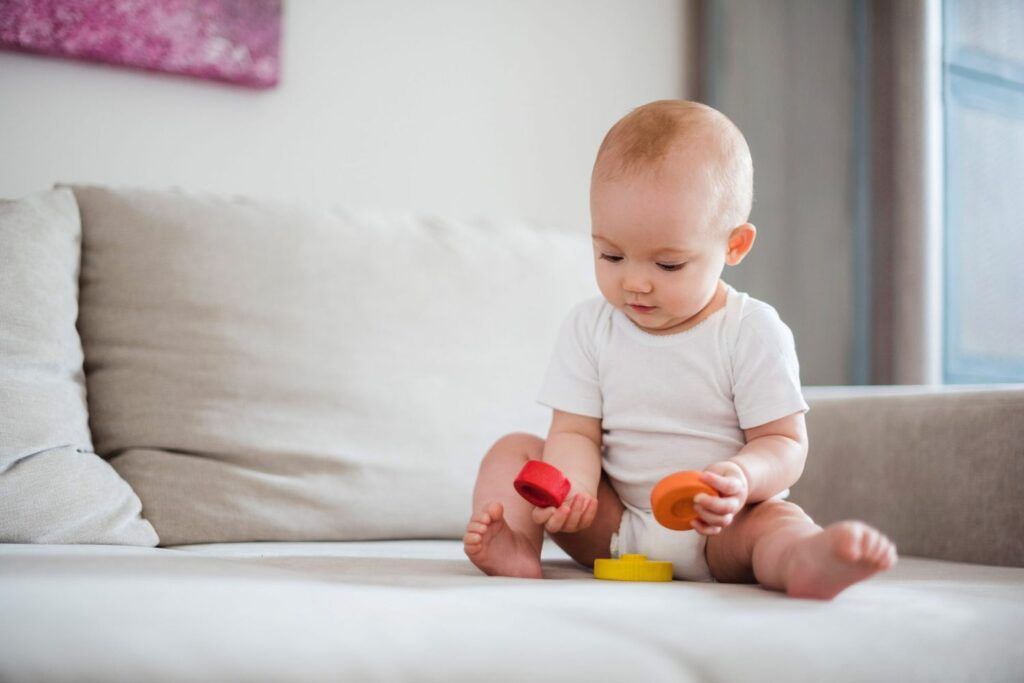During their first year, your baby will make tremendous progress from being just a helpless bundle to being able to stand and, in many cases, walk on their own. In this relatively short period of time, your little one will go through huge changes, and each milestone will take effort and perseverance. As a parent, you can help them reach all of the important milestones and celebrate each one with pride.
Since motor development in infancy is the foundation of their future physical development, it’s crucial to take it seriously and support your baby as they learn. Here are some of the many things you can do to encourage their motor development and help them fine-tune their skills.
-
Allow them to practice
Giving your baby plenty of floor time will do wonders for their motor skills. While you may be tempted to keep them in the confines of their comfortable crib or swing as much as possible, the floor is actually the best place for them to move and explore. This is how babies have been raised for ages and it’s the most natural way for them to interact with the world around them. You can use a simple play mat and play pens are also handy. Make sure your baby doesn’t go unsupervised for long, though. Also, try to engage them and spark their curiosity by playing with them. Get down on the floor and have fun with their age-appropriate toys together.
-
Provide them with lots of tummy time
Tummy time is an essential form of exercise for babies. This is how they’ll strengthen their neck, shoulders, and arms. Over time, it’ll first help them learn how to hold their head upright and turn it side to side. Eventually, it will encourage them to transition to crawling.
You can start doing tummy time by holding your newborn on your chest. This way, they’ll also enjoy your touch and the sound of your voice up close. A bit later, you can begin placing them on the floor or another flat surface. Start by doing this for a minute or two and work it up to about 10 minutes per session. Once they can hold their head upright, you can put toys around them to encourage them to explore and reach for them. After a few months, this will take them to crawling and finally standing and walking. And then it’s only a matter of time before they begin running and jumping all on their own, asking you to take them to the nearest trampoline park!
-
Challenge them
As with all developmental milestones, children need to be challenged in order to reach that next level. If activities are too easy, they won’t be engaging and won’t result in learning. For instance, once your baby can push up onto their forearms, try helping them to make the next step by putting toys just slightly out of their reach. This will eventually make them start crawling to get ahold of the toy. Or, you can test a sitting baby’s balance by doing the same and letting them grab the toys.
-
Make sure they’re enjoying themselves
Another important element of successful learning is having fun. If the baby’s not stimulated, they won’t be eager to practice and adopt new skills. Parents can get impatient and anxious for their child to reach the next milestone. Since babies are very attuned to your mood and feelings, they’ll notice this and then may feel an aversion to the activity. To keep things fun, you should expose them to different textures, sounds, shapes, and colors. This doesn’t mean you need expensive toys because many common household items can do (just make sure they’re safe for the baby).
You may also like
-
Best HVAC Tech School in Texas
-
Promenade Peak Accessible Excellence – Exploring the Unlimited Educational Opportunities at SMU, NUS, and SIT on Zion Road
-
Empowering Minds and Nurturing Talents The NJC Integrated Programme at The Sen at De Souza
-
HVAC Technician Training at Career Schools of Texas
-
Comprehensive HVAC Service Programs for Efficient System Maintenance


